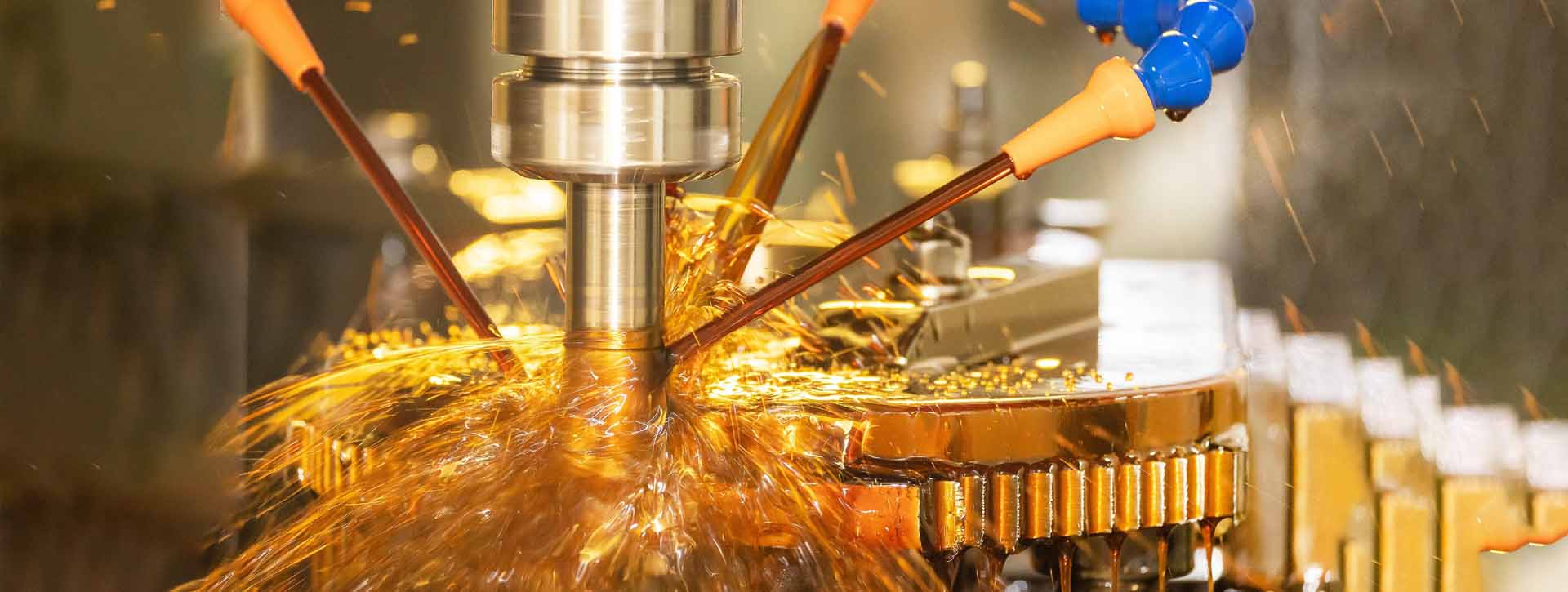What are metalworking fluids?
Metalworking fluids (MWFs) are lubricants or coolants used in metalworking operations, such as cutting, grinding, milling, and shaping, to minimize friction, heat generation, and tool wear while improving surface finish quality. MWFs act as a thermal barrier, helping to dissipate heat, prevent damage to the workpiece or tool, and prolong tool life. They can be oils, emulsions, synthetics, or semi-synthetics, with each type providing a different balance of lubrication, cooling, and chip removal properties.

How are metalworking fluids produced?
The production of metalworking fluids involves the following steps:
Selection of the Base Fluid: Depending on the application and requirements, choose an appropriate base fluid, such as mineral oils, synthetic oils, or water-miscible fluids like emulsions or semi-synthetic formulations.
Additive Selection: Additives, such as extreme pressure agents, corrosion inhibitors, emulsifiers, and biocides, are selected based on the desired performance characteristics, application requirements, and compatibility with the chosen base fluid.
UNPChemicals provides high performance and effective addiives for metalworking fluid manufacturers. Following is the list of metalworking fluid additives:
Popular UNPChemicals Metalworking Fluid Additives
Formulation Development: Determine the proper combination and concentration of the base fluid and additives to meet specific performance criteria and application requirements.
Blending and Mixing: Combine the base fluid and additives in a blending vessel under controlled temperature and mixing conditions to ensure a homogenous mixture.
Quality Control and Testing: Conduct tests during and after blending to verify that the final product meets the required specifications, such as viscosity, pH, and emulsion stability.
Packaging and Distribution: Package the metalworking fluid in suitable containers, label it accordingly, and distribute it to wholesalers, retailers, or directly to end-users.
Challenges of metalworking fluid manufacturing
Health and Safety: MWFs, especially those containing biocides, may pose health and safety risks to users, such as skin irritation or respiratory issues. Formulating safer alternatives without compromising performance is a challenge.
Environmental Regulations: Stricter regulations encourage the development of eco-friendly MWFs, minimizing negative environmental impact, and meeting compliance requirements.
Performance Optimization: Developing MWFs that offer high-performance, cost-effectiveness, and low consumption rates while being compatible with a wide range of materials and applications is challenging.
Microbial Contamination: Water-miscible MWFs are prone to microbial growth, leading to odor, corrosion, and short fluid life. Developing formulations with effective biocide use without raising health and safety concerns is a challenge.
Applications of metalworking fluid additives
Metalworking fluid additives improve the performance of MWFs in various operations, such as:
Cutting and drilling: Additives help provide better tool life and surface finish while reducing heat generation.
Grinding: Additives reduce friction and allow for faster grinding while minimizing wear on the grinding wheel and workpiece.
Milling: Additives improve chip removal and protect tool surfaces, improving the milling process.
Shaping and forming: Additives enhance lubrication and reduce friction during the shaping of metal components.
How to select metalworking fluid additives
When selecting metalworking fluid additives, consider the following factors:
Compatibility: Ensure the additives are compatible with the base fluid and other additives in the formulation.
Application Requirements: Consider the specific operation, such as cutting, grinding, or milling, to select the appropriate additives.
Material Compatibility: Choose additives that are suitable for the metal alloys used in the application.
Health, Safety, and Environmental Impact: Select additives with minimal health risks, safety concerns, and environmental impact, while adhering to relevant regulations.
By considering these factors, manufacturers and users can develop and select appropriate additives to enhance the performance, efficiency, and safety of metalworking fluids across a wide range of applications.